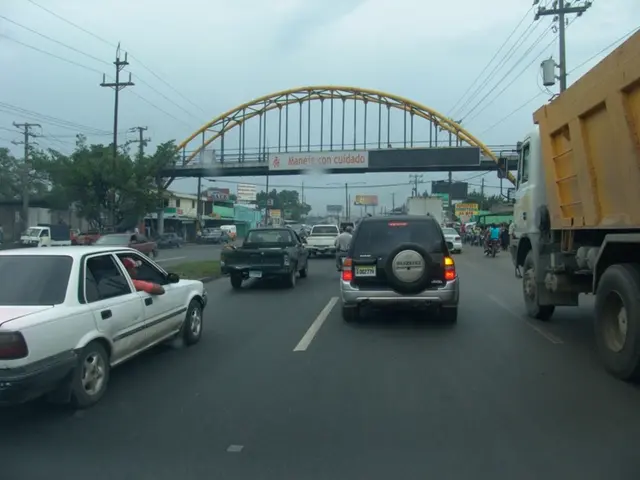Africa's Urban Canyons: Perilous Gorges in Urban Areas
In the heart of Uganda, Koboko, a city nestled near the borders with Democratic Republic of the Congo and South Sudan, has been facing an unexpected challenge. Koboko's city center, situated on an elongated hill, has seen the development of new neighborhoods sprawling along its sometimes steep slopes. This expansion has led to the formation of deep drainage systems, with some reaching up to eight or ten meters deep during the construction of new roads.
These drainage systems are not ordinary ones, but urban erosion rills, also known as urban gullies. The first comprehensive study on these rills was published in the journal "Nature," focusing on the Democratic Republic of the Congo. The study analyzed satellite images of 2922 ravines in 26 cities, which is almost seven times the size of Germany.
The growth of urban gullies in Koboko is a significant concern, as it is not unique to the city. In fact, these gullies pose safety and hygiene risks due to untreated wastewater and uncontrolled waste disposal. In Kinshasa, the capital of Congo, urban gullies stretch over a total of 221 kilometers.
The rapid increase in urban gullies is alarming. In Koboko, the number of these rills has grown significantly over time. Only 46 of these gullies existed in the 1950s, indicating a significant increase. Between 2004 and 2023, around 99% of the ravines have increased by at least 10 square meters.
The consequences of urban gullies are far-reaching. More than a quarter of the approximately 770,000 people living in the expected expansion zone in the DR Congo are at risk of being displaced by urban ravines. In the Democratic Republic of the Congo alone, approximately 118,600 people have been displaced by urban gullies between 2004 and 2023. Without countermeasures, researchers estimate that hundreds of thousands of people across Africa will be displaced by expanding urban ravines in the next ten years.
To combat this issue, governments should prioritize sustainable infrastructure and involve experts from relevant fields, such as environment and resources, in urban planning. Involving affected communities in the planning of measures can significantly contribute to understanding their insights on both experiences with this situation and possible solutions.
Scientists from the University of Trento chose Koboko in 2017 for a research project on urban gullies. Despite no specific university currently researching urban erosion rills in Koboko, Uganda, the city remains a focal point for understanding and addressing this pressing urban challenge.
In conclusion, the growth of urban gullies in Koboko and other cities in Africa presents a significant threat to safety, health, and livelihoods. By prioritizing sustainable infrastructure and involving experts and communities in planning and decision-making, we can work towards mitigating the impacts of these urban ravines and ensuring a safer, healthier future for all.
Read also:
- Peptide YY (PYY): Exploring its Role in Appetite Suppression, Intestinal Health, and Cognitive Links
- Toddler Health: Rotavirus Signs, Origins, and Potential Complications
- Digestive issues and heart discomfort: Root causes and associated health conditions
- House Infernos: Deadly Hazards Surpassing the Flames








